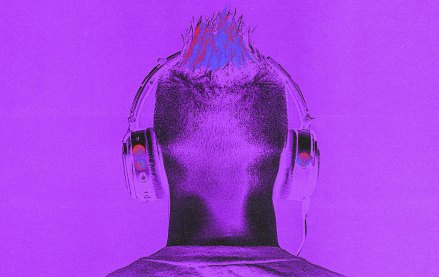
Demand Media has become a cautionary tale for early internet companies that soared, only to come crashing down to earth once the rest of the web caught up. With its low-cost content-farm strategy, it became the 17th biggest web property in the U.S. in 2010, with 105 million unique visitors until changes in Google’s algorithm dinged it and caused its value to crash.
Demand has gone through a number of failed editorial pivots, but it has kept trying. Under CEO Sean Moriarty, who joined 18 months ago, the company has doubled down on efforts to buff its core sites, eHow and Livestrong, for readers and advertisers.
“Many years ago, we were creating content based on what people were searching for,” said Mitchell Pavao, who joined in June 2015 as svp. “While there were certainly advantages to that, we wanted to focus on our relationship with our audience and brands.”
EHow was associated with junk articles instructing readers on things like how to open a refrigerator door or pick blueberries. Demand has purged two-thirds of those articles on everyday tasks, or 2.4 million, leaving the more ambitious projects like “How to build a brick fire pit in your backyard” and “How to Make a Hedgehog Out of a Cantaloupe.” Livestrong got rid of articles on disease and now focuses on fitness and nutrition. (For the record, eHow kept “How to boil an egg”; Pavao said that’s because people still find it useful. “It may not be glamour, but it’s still helpful.”) Demand still relies on outside contributors, but he said they’re more hand-picked than before, and the editorial process is more human- and less data-driven than before.
Beyond getting rid of the junk articles, Demand gave the sites a facelift, cutting the number of ad units by half, making them responsive on mobile devices, and adding the ability to comment and share. Demand also diversified its traffic sources beyond search (it won’t quantify how much) by launching newsletters, syndication deals with other publishers and social media. In the past year, eHow and Livestrong increased their combined Facebook and Pinterest followings by 90 percent and 50 percent, respectively, according to Demand. “We used to be very myopic in our focus on search; it is far less than it used to be,” Pavao said.
Demand’s predicament is not entirely unlike that of About.com, another product of the portal age, which has begun unbundling its content sections into distinct verticals, an acknowledgment of the rise of specialized sites.
Demand Media is a long way from its peak; it’s now the 71st biggest U.S. site, with 46.4 million uniques in June. Livestrong, with 27 million uniques, was the fifth-biggest health property in the U.S. in June, while eHow, with 22 million uniques, ranked seventh in lifestyle/home, all according to comScore.
Programmatic is increasingly the norm, so content providers like Demand Media are increasingly judged by their ability to help brands target the right consumers, which makes the quality of their content and their audiences paramount, said Michael Duke, a managing director at Wunderman Health. But Pavao said the company is succeeding with readers and advertisers, as evidenced by engagement on social media and ad deals.
The company began pushing into native advertising two years ago, and in the first quarter, reported that its custom content division signed 45 new deals, with 70 percent of its revenue coming from repeat customers. Nest, Arm & Hammer and Citibank are among recent wins. “We haven’t met with a lot of resistance from brands,” he said.
The site improvements haven’t gone unnoticed in the media community. “EHow is potentially the better of the two overhauls,” said Lisa Cucinotta, director of social strategy and business development at Horizon Media. “It now feels very much like other more reputable content hubs and does contain a lot of useful information. There are less wasteful links and SEO-style writing and more focus on retaining a user on the site as opposed to just serving them the maximum number of ads on a single page.”
That’s not to say Demand may not face other problems now that it’s diversified its traffic sources. “Content farms have been dinged by Google for years,” said Cucinotta. “But now that Facebook has joined in on de-prioritizing ‘clickbait’ content on their platform, it may deliver another blow.”
Image: Demand Media
More in Media

As Patreon and Substack enter the mix, the livestreaming landscape is dividing creators
Platforms’ livestreaming push has highlighted an underlying divide in the community of livestreaming creators.

Digiday+ Research: Publishers were ready to depend more on first-party data. So, now what?
Publishers were ready for the move away from third-party data: the role of first-party data in generating ad revenue was set to grow significantly, and the percentage of ad impressions served by first-party data was set to increase.

Digiday+ Research Data Sheet: The state of subscription pricing
This infographic details how publishers are approaching subscription pricing and how subscriptions drive other revenue streams for publishers.





